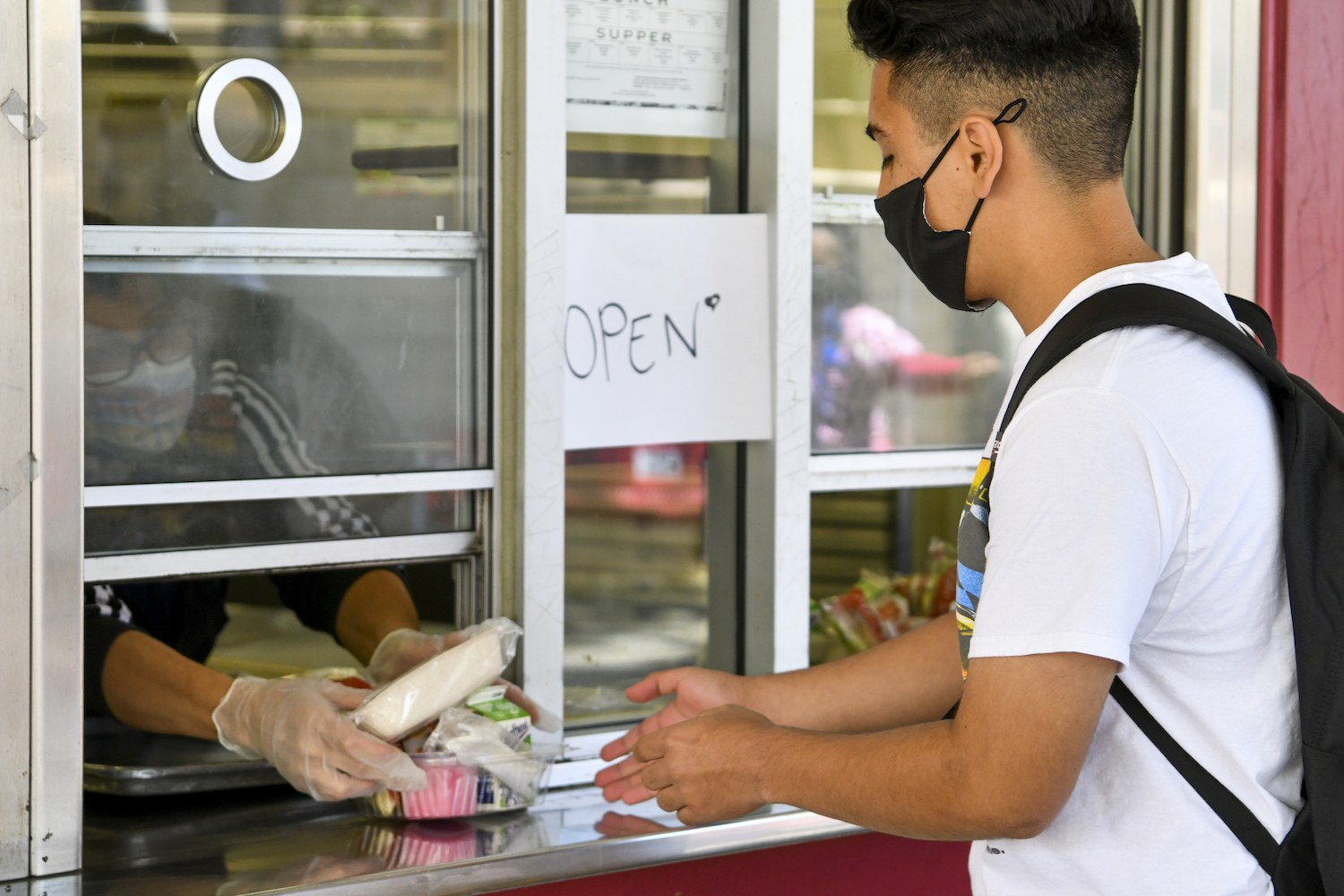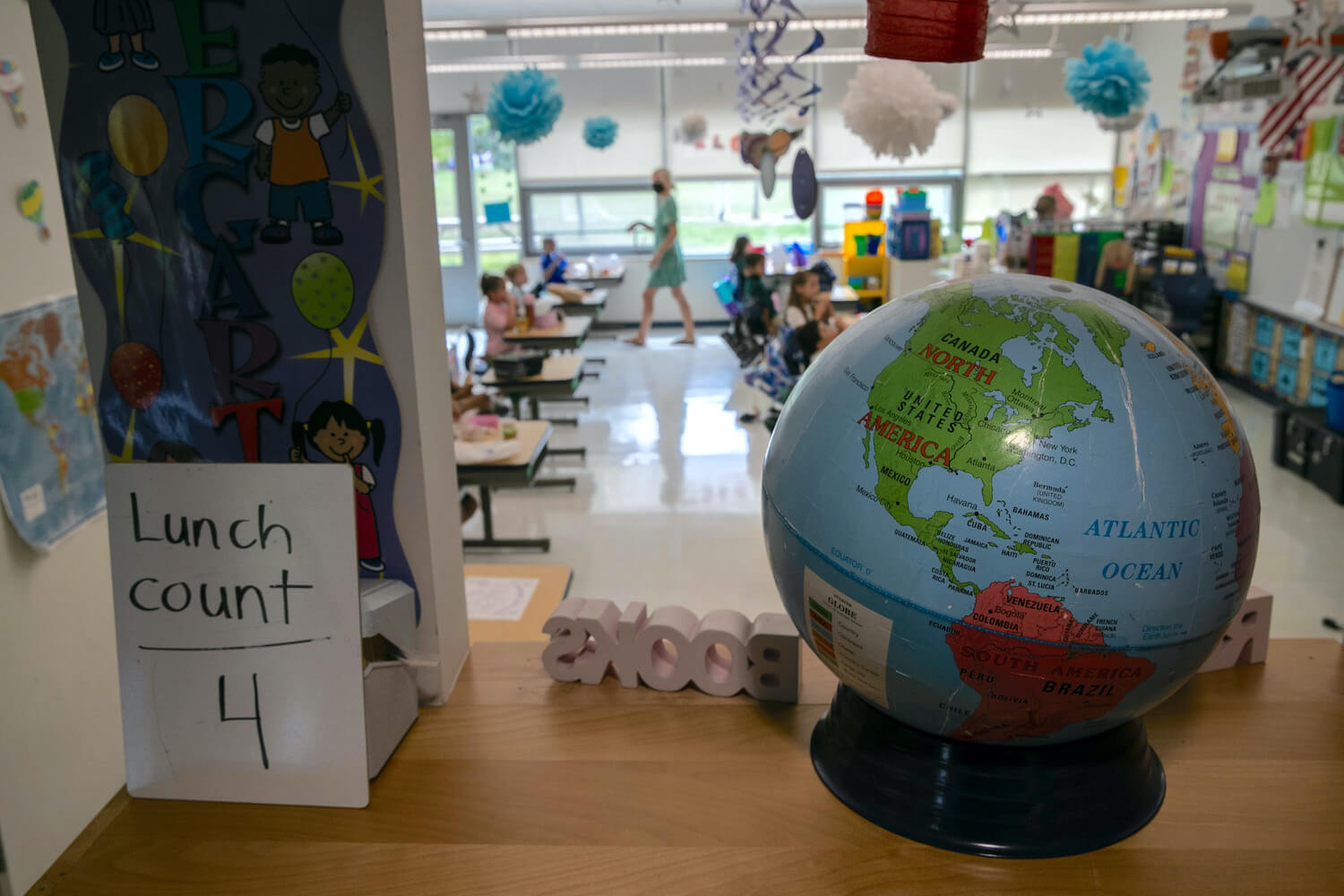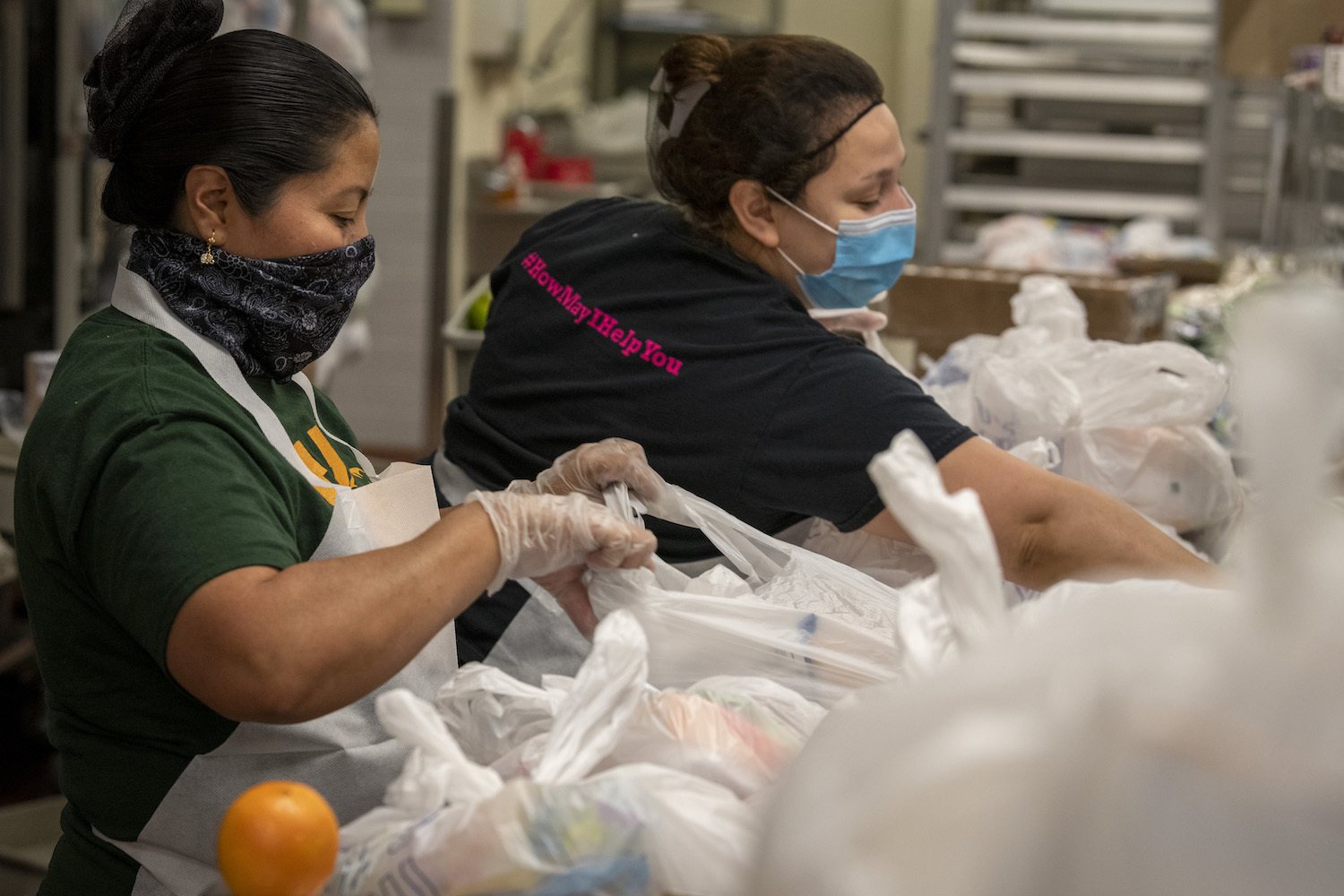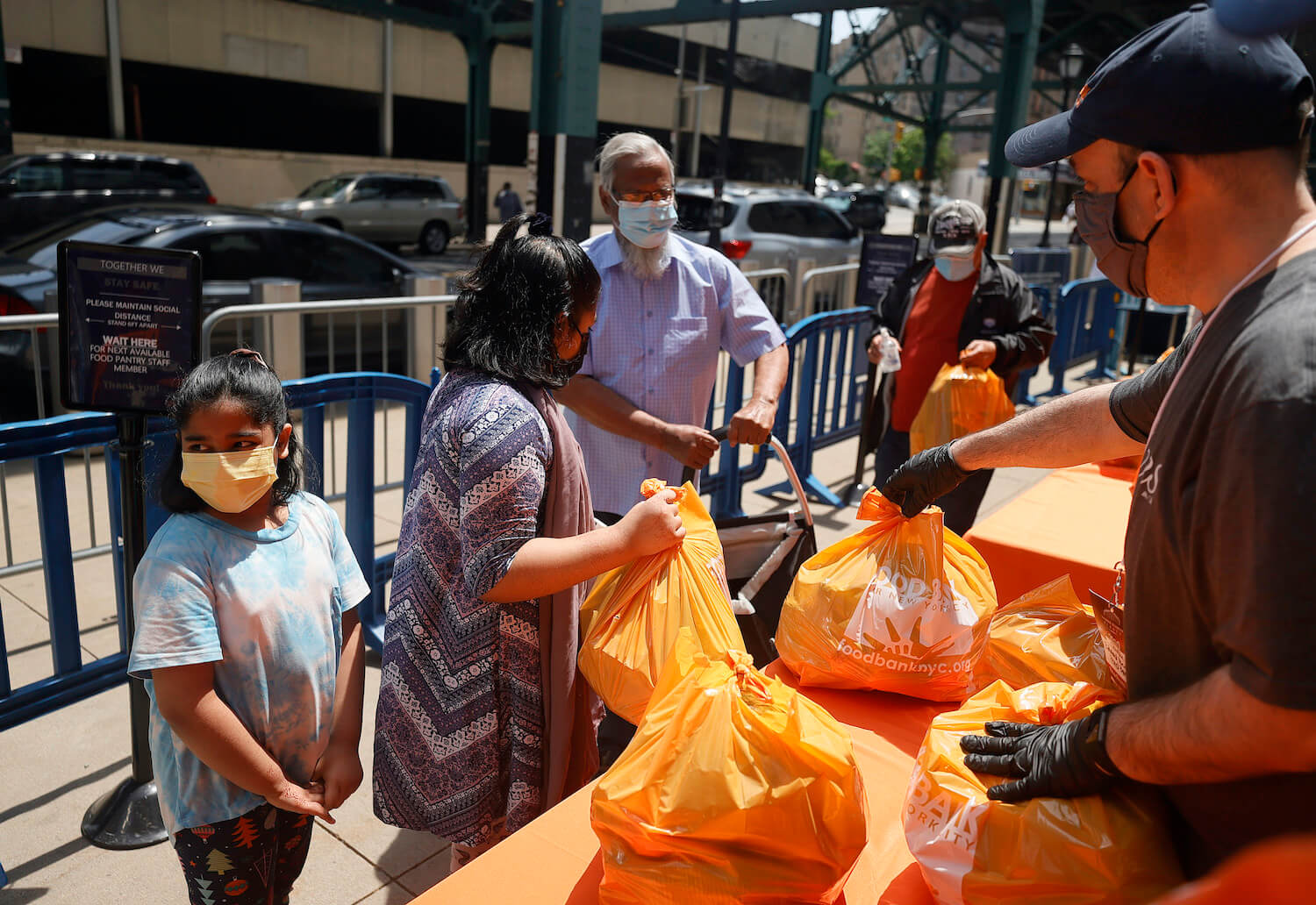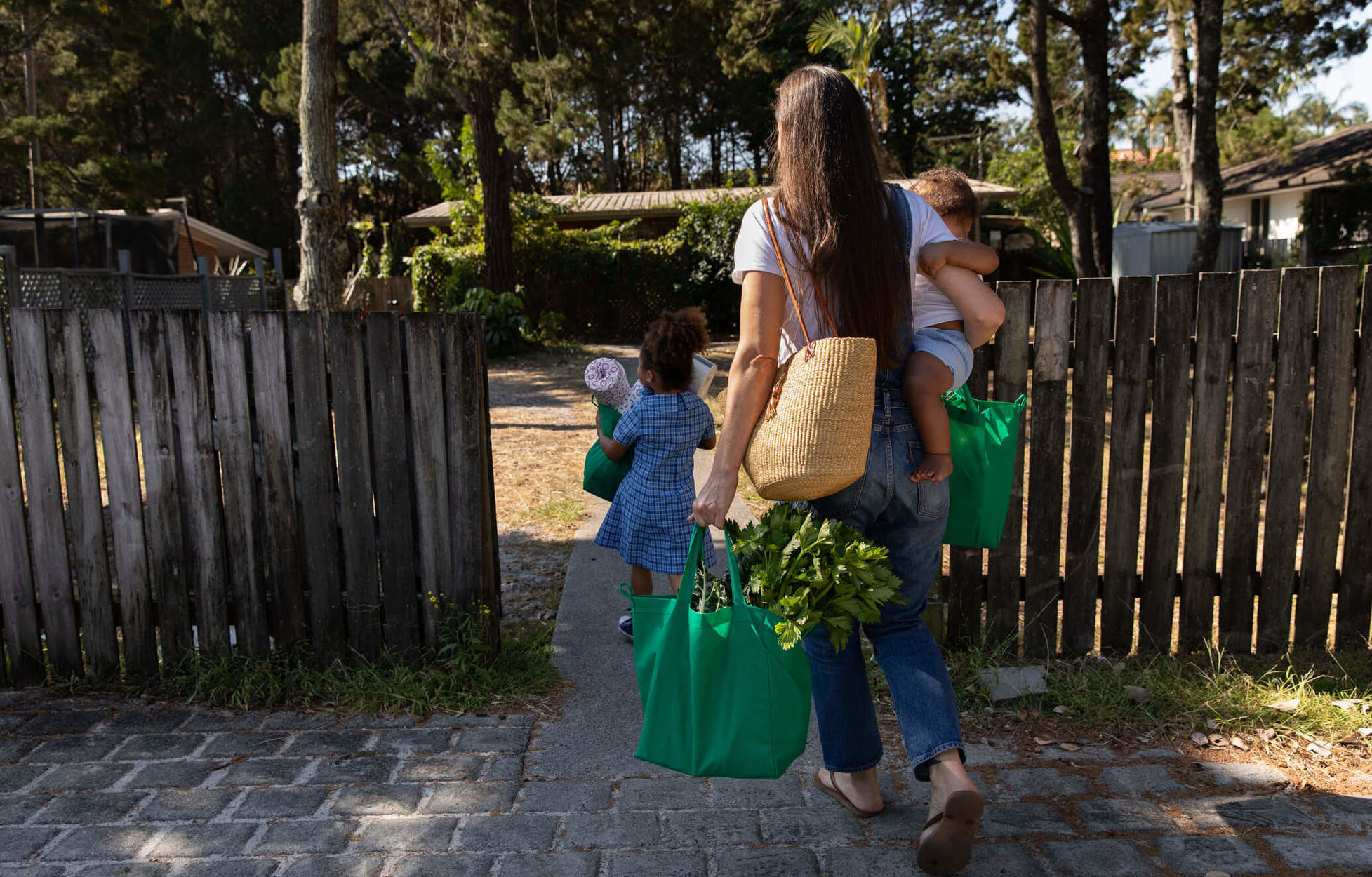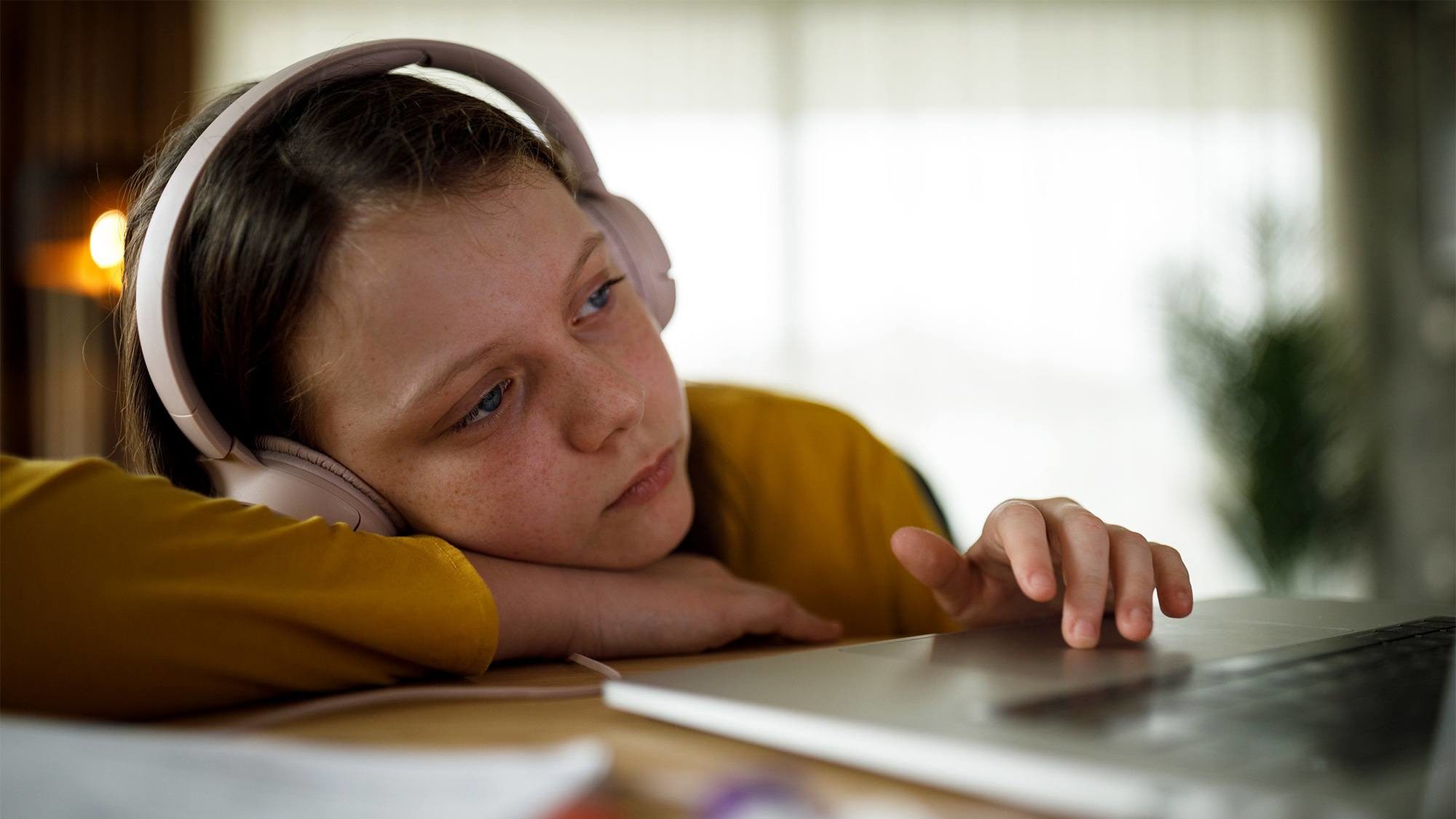
iStock/damircudic
P-EBT food benefits helped narrow the hunger gap during the pandemic. This school year, some families who relied on the program are now being excluded.
When Lisa Brewer decided last July to enroll her children in virtual learning for the 2021-2022 academic year, she did so to prioritize the health and well-being of her family. The vaccine had only been approved for adults at that point. Brewer was worried that a single Covid-19 exposure among her four children could put the entire family at risk of getting sick.
Brewer and her husband live in a mobile home in Charlotte, North Carolina, with her elderly parents, one of whom has chronic obstructive pulmonary disease, an inflammatory lung condition. The home is a small space, and the kids don’t have bedrooms. So when her local public school district, Charlotte-Mecklenburg Schools, announced it would be launching a first-of-its-kind, fully virtual school for families who weren’t comfortable returning to in-person instruction in the fall, Brewer was happy to sign them up.
What Brewer didn’t realize is that doing so meant forgoing sorely-needed breakfast and lunch money for her kids.
“The kids are home 24 hours a day. They’re eating their breakfast, their lunch and snacks, and everything at home. When we did get P-EBT, it was a godsend.”
During the previous school year, Brewer’s family had been automatically eligible for a Covid-19 hunger aid initiative called Pandemic-EBT (P-EBT), which was first authorized in March 2020 through the Families First Coronavirus Response Act. The program was supposed to be a simple solution to a big challenge: When the pandemic shut down schools, students across the country lost a crucial weekday source of food. P-EBT provided pre-loaded debit cards to families whose kids would have otherwise received free or reduced-price school meals as a way to reimburse them for the costs of those missed breakfasts and lunches.
“It meant everything,” Brewer said of P-EBT. She even received the payments on her regular Supplemental Nutrition Assistance Program (SNAP, formerly known as food stamps) card, making them a straightforward boost to her monthly grocery budget. “The kids are home 24 hours a day. They’re eating their breakfast, their lunch and snacks, and everything at home. When we did get P-EBT, it was a godsend.”
But Brewer got a rude awakening this month, when the North Carolina Department of Health and Human Services started issuing P-EBT payments for meals missed between September and December of the 2021-2022 school year: She discovered that her kids no longer qualified for the funds.
As it turns out, enrolling in fully virtual instruction comes with some unexpected—and to Brewer’s mind, downright counterintuitive—fine print. According to the Department of Agriculture (USDA), the agency tasked with administering P-EBT, when a child who normally attends a brick-and-mortar school has to switch to virtual learning because of a shutdown, or because they’re in quarantine, that child becomes eligible for P-EBT payments to cover missed school meals. The total value of those payments is based on the number of days a given student is absent from school for Covid-related reasons multiplied by $7.10 per day. For example, if a student spent 10 days learning virtually out of a month, their family would receive slightly over $70 in the form of a P-EBT payment.
“The bottom line is that the pandemic continues to evolve in ways that we didn’t anticipate and P-EBT is always playing catch up.”
However, a child enrolled in a fully virtual school is not eligible for P-EBT at all. This is because unlike brick-and-mortar schools, virtual schools would not have offered meals to enrolled students under non-pandemic circumstances, so they aren’t offering them during this chaotic time either. After all, they don’t have cafeterias, nutrition staff, or cooks, and the students are learning from home, so there’s nothing—by that logic—to reimburse families for anyway.
This reasoning threw Brewer for a loop. If there weren’t a pandemic, she wouldn’t have had to enroll her kids in a virtual school in the first place. (A representative of the Charlotte-Mecklenburg Schools district confirmed that it does not provide meals for students enrolled in virtual learning.)
“I almost feel like we’re being punished,” she said.
Brewer has multiple sclerosis, which has made working an impossibility. Her husband is in construction, meaning that his income can fluctuate widely based on weather and what gigs are available at any given time. Between his earnings, food stamps, and disability payments, Brewer has found herself running out of grocery money often a week or more before each month’s end. Still, she tries to make a hearty and filling dinner for the family every night. Breakfast is usually cereal, and lunch either gets skipped—or it consists of whatever snacks the kids can find in the cupboards.
The dilemma facing Brewer’s family is one example of how Covid-19 relief rules can be at odds with the pandemic reality for struggling families, leading to vastly unequal levels of food access.
In the spring of 2020, almost all brick-and-mortar schools pivoted to a virtual learning model to limit the spread of Covid-19. Then, over the course of the following academic year, many schools attempted to re-open in some capacity by offering hybrid in-person and remote learning models.
In the summer of 2021, however, a new trend emerged: As states and school districts geared up for a full return to in-person learning, many launched dedicated virtual “academies,” which were intended to be a fully online alternative for families who were hesitant about sending their kids back to physical classrooms. Most fully virtual schools are operated by the same public school districts as their brick-and-mortar counterparts. For the purposes of federal nutrition policy, however, they are considered distinct entities that do not participate in the National School Lunch Program (NSLP), the country’s primary school meal distribution program. Because of this technicality, students enrolled in fully virtual learning settings aren’t missing any school meals for which they’d need to be reimbursed, at least by USDA’s accounting.
“In the beginning, all the schools were closed, so everybody had the same issue. Now increasingly, we have people in all of these different situations. We just haven’t designed [P-EBT] with the maximum flexibility.”
“P-EBT’s authorizing statute, the Families First Coronavirus Response Act, makes P-EBT benefits available to children who would have received free or reduced-price meals at their schools through the National School Lunch Program (NSLP), if not for their schools’ closure or reduced attendance or hours in response to the Covid emergency,” a USDA spokesperson wrote in response to an emailed list of questions from The Counter. “Children who attend fully virtual academies are ineligible for P-EBT benefits, just like children who attend other non-NSLP-participating schools, because they would not receive free or reduced price NSLP meals at those institutions in the absence of the Covid emergency.”
Effectively, this P-EBT policy has created a two-tier pandemic aid system among kids who would typically qualify for free breakfast and lunch: Those learning from home due to a Covid-19 shutdown of their brick-and-mortar school are eligible for relief money. Those whose families, out of an abundance of caution, have their children learning from home in a new, fully virtual program are not.
“The bottom line is that the pandemic continues to evolve in ways that we didn’t anticipate and P-EBT is always playing catch up,” said Elaine Waxman, a senior fellow at the Urban Institute, an economic and social policy think tank. “In the beginning, all the schools were closed, so everybody had the same issue. Now increasingly, we have people in all of these different situations. We just haven’t designed [P-EBT] with the maximum flexibility. Frankly, people thought the pandemic would come and it would go, and that would be the end of it, and obviously that’s not happening.”
—
Joel Barron, a mother of two now living in Minnetonka, Minnesota, found herself in a situation similar to Brewer’s last week.
In August, before the vaccine was approved for kids aged 5 and up, Barron decided to enroll her kids into the new virtual learning academy offered by White Bear Lake Area Schools, their local public school district, rather than have them return to in-person instruction in the fall. Her daughter has asthma, and before the pandemic, she had suffered from a collapsed lung. Barron also noticed that both of her kids were getting better grades while learning remotely, and that she could spend more time helping them with school work when they learned from home.
The downside now is that money is tighter than ever: Her 10- and 12-year-olds eat a lot.
“They’re growing by the day, basically,” she said. “Those extra P-EBT funds really helped replace the meals that they would have been eating at school.”
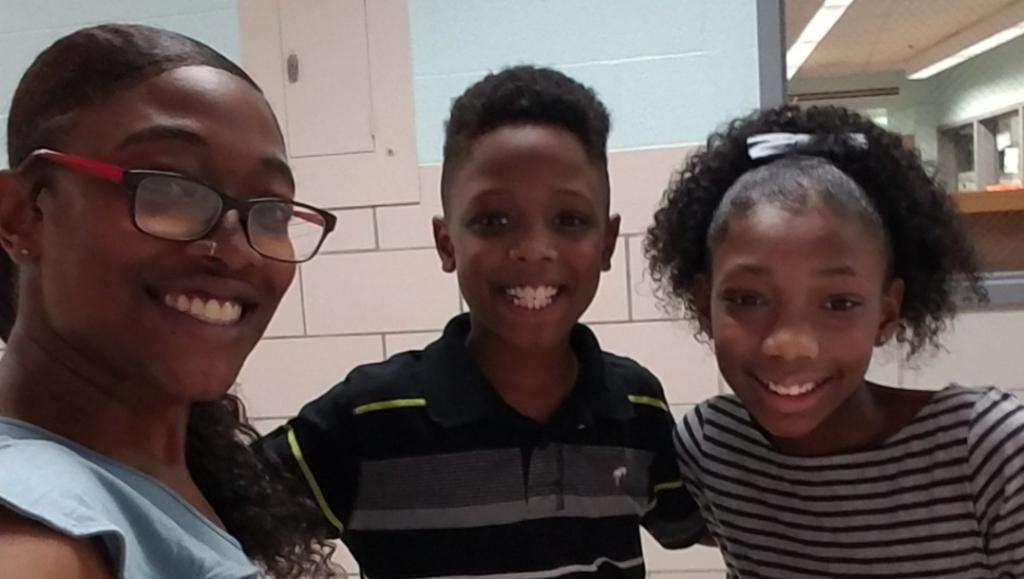
Joel Barron, a mother of two now living in Minnetonka, Minnesota, opted for online instruction due to her daughter’s preexisting conditions.
Joel Barron
Barron said she had been looking forward to getting P-EBT payments again, especially after federal unemployment benefits ended in September. Right now, she told The Counter, her only income is from SNAP and the state’s Temporary Assistance for Needy Families (TANF) program. She’s struggling to stretch every dollar and find cheaper ways to keep everyone full. But Barron discovered this month that she wouldn’t be getting that help in a phone call with the Minnesota P-EBT hotline.
Unlike Charlotte-Mecklenburg Schools, Barron’s district offers virtual learning families the option to pick up five days’ worth of meals once every week. But Barron moved a 40-minute drive away from the pick-up location in October, when she found an affordable home through the federal Section 8 Housing Choice Voucher program. (It’s worth pointing out that even when districts do offer grab-and-go meals for virtual students, the option might not be feasible for families whose schedules don’t align with pick-up times, or for those without regular access to transportation.)
Students enrolled for in-person learning are eligible for school meal funds when they switch to online learning, but students fully enrolled in dedicated virtual schools are not.
But not all schools offer grab-and-go meals to virtual learning students. It’s a choice made on a school-by-school basis, not a requirement, said Bridget Lehn, nutrition services director at White Bear Lake Area Schools. She explained that other schools might have a wide range of reasons that prevent them from doing so. In recent months, school nutrition programs have been hit hard by staff shortages, rising food costs, and supply-chain disruptions, for example.
Lehn estimated that, of the more than 240 students enrolled in White Bear Lake’s distant learning program, one quarter would have qualified for P-EBT last year, when all of the district’s students were participating in some level of remote learning, and there was not yet a formal, separate virtual school in place. Barron’s is just one of 60 families now cut off from P-EBT, because they’re now attending a fully virtual school.
“It basically made me feel like I’m being penalized because of the choices that I made, that I, as a parent, assumed was the best option for my children in my situation,” Barron said.
—
Right now, only eight states have been approved to administer P-EBT for the 2021-2022 school year. According to a Washington Post report earlier this week, 17 more have applied to participate. If approved, the dilemma that parents like Brewer and Barron are facing could soon play out across half the country: With students enrolled for in-person learning being eligible for school meal funds when they switch to online learning, but students enrolled in dedicated virtual schools getting left out.
Anti-hunger advocates argue that excluding families from P-EBT just because they attend a fully virtual school within their district contradicts the program’s original aims.
“We’re hoping USDA might reconsider this interpretation.”
“The intent was to provide meals for kids who are going to virtual school because of the pandemic,” said Crystal FitzSimons, director of school and out-of-school-time programs at the Food and Research Action Center (FRAC), an anti-hunger group. “If a child is enrolled in a virtual academy, that may have been the only option that the school district gave them if they wanted to go virtually. [Now] they would lose access to benefits. It is a problem, and we’re hoping USDA might reconsider this interpretation.”
Unless that happens, kids who qualify for free lunch will continue to be excluded from P-EBT when enrolled in virtual schools. And their families, as a result, will continue to bear the emotional and financial toll.
“What happens when families experience food insecurity is that parents do everything they can to try and protect kids,” FitzSimons said. “But how it plays out is a reduced number of meals, reduced amount of food you’re eating, looking to emergency food resources if they’re available to you, but they aren’t always [….] It’s a huge gap for families to have to fill, and if they’re struggling already or close to the edge, it can really push families over.”
“What happens when families experience food insecurity is that parents do everything they can to try and protect kids.”
Brewer, the mother of four in Charlotte, North Carolina, said that the loss of P-EBT is the latest in a string of financial blows that have strained the household grocery budget, following reduced income and rising food costs at the grocery store.
“It’s adding insult to injury to injury to injury.”
On some days, she said, she has to make the painful decision to tell her kids that there’s simply no food for lunch.
“There are times when I just have to look at them and—I hate to say this—but I have to tell them, ‘There’s nothing I can do, baby,’” she said. “I can make dinner a little earlier, but there’s nothing I can do until dinnertime. Because if I feed them during the day, sometimes I may not have food for them in the evening, or I may not have it for another day later that month.”


